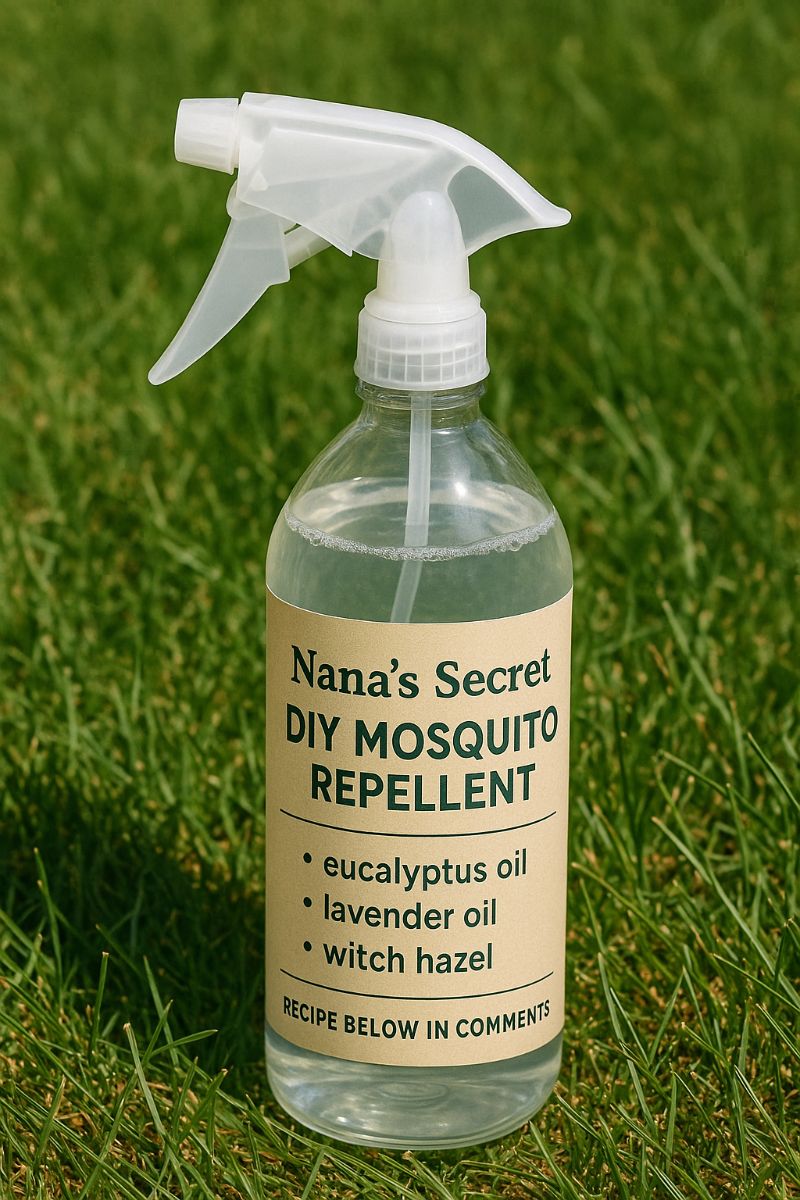My nana swears by this DIY mosquito repellent recipe. Here’s how it works
Holly Owens
Contributing Writer
Print this recipe
With the rise of mosquito-borne diseases and the increasing awareness of the chemicals present in commercial repellents, many people are turning to natural alternatives. My nana, a firm believer in the power of nature, has been using a DIY mosquito repellent recipe for decades. Her concoction not only keeps the pesky insects at bay but also leaves a pleasant aroma on the skin.
In this article, we will delve into the origins of her tried-and-true recipe, explore the effectiveness of its ingredients, and provide a step-by-step guide for making it yourself. We will also compare it to commercial options, discuss the benefits of using natural ingredients, and share real-life testimonials from those who have experienced its success.
1. The Origins of Nana’s Mosquito Repellent Recipe
Nana’s recipe has been passed down through generations, originating from her grandmother who lived in a rural area where mosquitoes were a constant nuisance. The recipe evolved over time, incorporating locally available ingredients that were known for their insect-repelling properties. Nana recalls her grandmother using a mix of essential oils and herbs, which were abundant in their garden.
The key ingredients in her recipe include eucalyptus oil, lavender oil, and witch hazel. Each component was chosen for its specific properties: eucalyptus oil for its strong scent that repels mosquitoes, lavender oil for its soothing effect on the skin, and witch hazel as a natural astringent and carrier for the oils. The recipe has been refined over the years, with precise measurements ensuring its effectiveness: 10 drops of eucalyptus oil, 10 drops of lavender oil, and 2 tablespoons of witch hazel.
2. Understanding the Ingredients: What Makes It Effective
Eucalyptus oil is renowned for its ability to repel mosquitoes due to its strong, menthol-like scent. Studies have shown that eucalyptus oil can provide protection against mosquitoes for up to 2 hours. Lavender oil, while primarily known for its calming properties, also acts as a natural insect repellent. Its pleasant aroma makes it a popular choice for those who prefer a more fragrant solution.
Witch hazel serves as a base for the repellent, helping to dilute the essential oils and making them safe for application on the skin. It also has anti-inflammatory properties, which can soothe any existing bites. The combination of these ingredients creates a powerful yet gentle repellent that is safe for all ages.
3. Step-by-Step Guide to Making the Repellent
To make Nana’s mosquito repellent, you will need the following ingredients: 10 drops of eucalyptus oil, 10 drops of lavender oil, and 2 tablespoons of witch hazel. You will also need a small spray bottle for easy application.
Start by adding the witch hazel to the spray bottle. Next, carefully add the eucalyptus and lavender oils. Once all the ingredients are in the bottle, secure the lid and shake well to ensure the oils are thoroughly mixed with the witch hazel. Your homemade mosquito repellent is now ready to use. For best results, shake the bottle before each use to maintain the mixture’s consistency.
4. The Science Behind Natural Mosquito Repellents
Natural mosquito repellents work by masking the scents that attract mosquitoes, such as carbon dioxide and body odors. Essential oils like eucalyptus and lavender contain compounds that interfere with the mosquito’s ability to detect these scents, effectively keeping them at bay.
Research has shown that certain plant-based oils can be as effective as DEET, the active ingredient in many commercial repellents, without the associated health risks. Eucalyptus oil, in particular, contains a compound called p-menthane-3,8-diol (PMD), which has been proven to repel mosquitoes effectively.
5. Comparing DIY and Commercial Mosquito Repellents
Commercial mosquito repellents often contain synthetic chemicals such as DEET or picaridin, which are effective but can cause skin irritation and other health concerns with prolonged use. In contrast, DIY repellents like Nana’s offer a natural alternative that is gentle on the skin and free from harsh chemicals.
While commercial repellents may provide longer-lasting protection, the natural ingredients in DIY solutions are generally safer for frequent use, especially for children and those with sensitive skin. Additionally, making your own repellent can be more cost-effective and allows for customization based on personal scent preferences.
6. Benefits of Using Natural Ingredients
Using natural ingredients in mosquito repellents offers several benefits. Firstly, they are less likely to cause skin irritation or allergic reactions, making them suitable for all skin types. Secondly, natural ingredients are biodegradable and environmentally friendly, reducing the impact on ecosystems.
Moreover, essential oils like eucalyptus and lavender have additional health benefits beyond repelling mosquitoes. Eucalyptus oil has antiseptic properties, while lavender oil is known for its calming effects, promoting relaxation and reducing stress.
7. Common Mistakes to Avoid When Making the Repellent
One common mistake when making DIY mosquito repellent is using undiluted essential oils, which can cause skin irritation. Always mix essential oils with a carrier like witch hazel to ensure they are safe for application.
Another mistake is not shaking the mixture before each use. Essential oils can separate from the carrier over time, so it’s important to shake the bottle well to maintain an even distribution of ingredients. Lastly, avoid using expired or low-quality oils, as they may not be as effective in repelling mosquitoes.
8. How to Apply the Repellent for Best Results
For optimal protection, apply the repellent to exposed skin and clothing before going outdoors. Spray a light mist over your arms, legs, and any other areas prone to mosquito bites. Be sure to avoid contact with the eyes and mouth.

